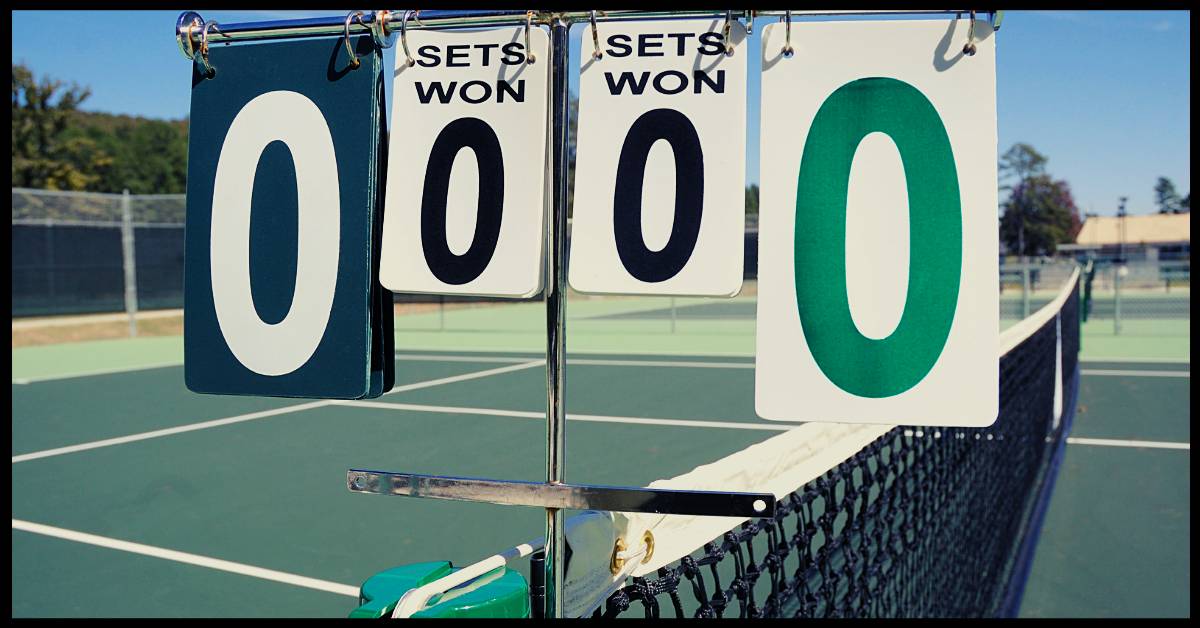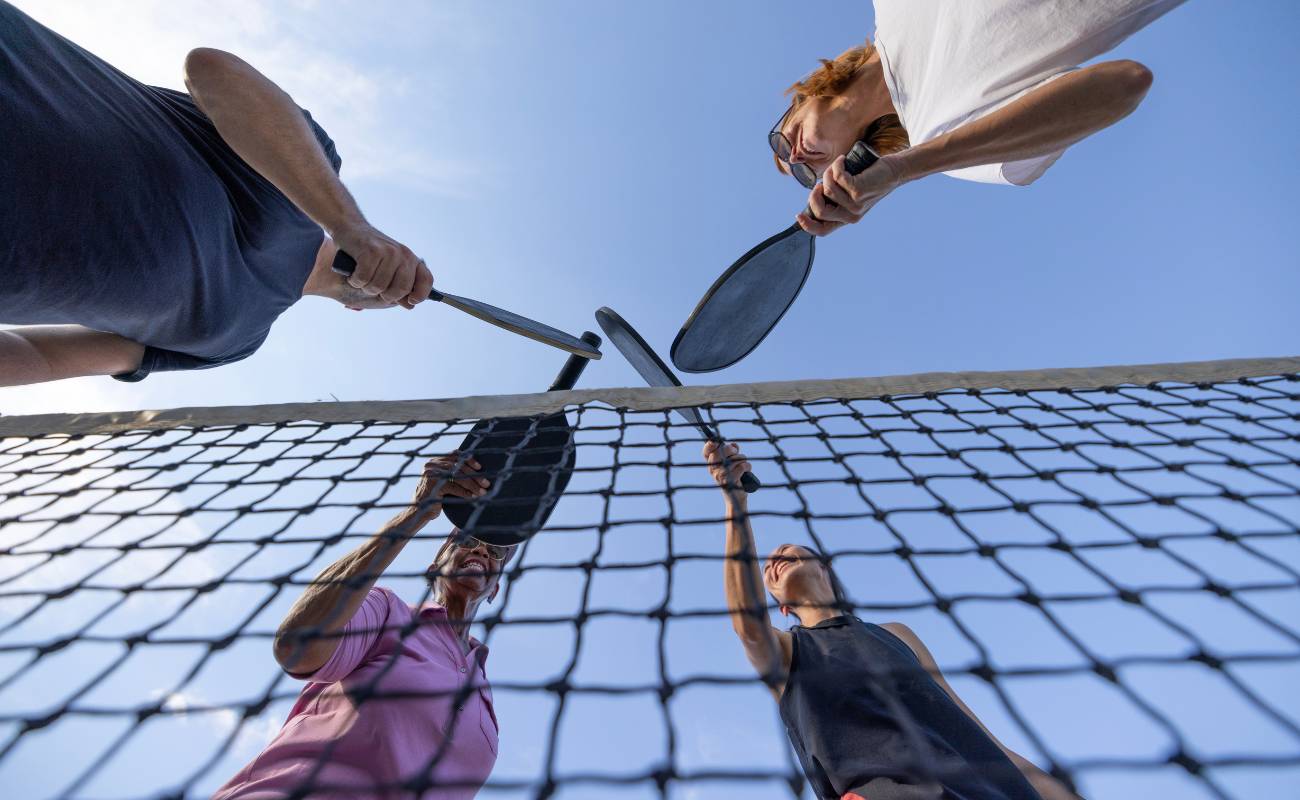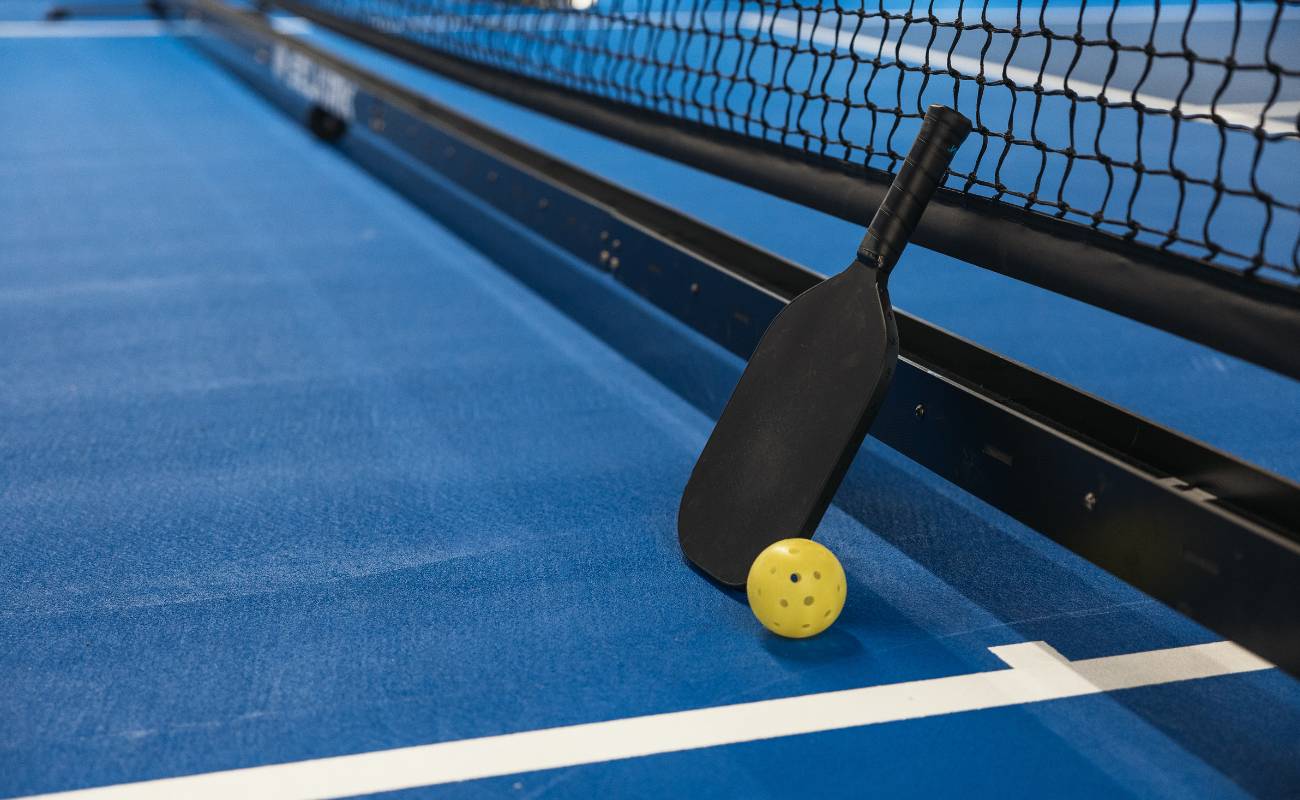Are you ready for some pickleball? This sport has been around since 1965, but it’s only recently become popular with people of all ages. Whether you’re a beginner or an experienced player, we’ve got you covered. From scoring to rules, here’s everything you need to know about pickleball scoring and rules.
Rules of Pickleball
Pickleball is played on a court that is 20 feet wide by 44 feet long with a net that stands 34 inches in the middle of the court. The game is played with two players (singles) or four players (doubles). The objective is to score points by hitting the ball over the net and onto your opponent’s side of the court. The first player/team to score 11 points wins the game. To win a point, a player must serve the ball into their opponent’s court and then hit it back over the net until their opponent misses or fails to return it back over the net.
The Basics of Pickleball Scoring

Pickleball is one of the few sports where playing to 11 points does not mark the end of the game. Instead, pickleball is typically played in a best-of-three format. That means that the first team (or person) to reach 11 points wins the first game, and if there are more games left in the match, then they will continue until someone reaches 11 points again. The winner is determined by who has won two out of three games.
In order for a team or player to win a point, they must be serving, and their opponent must fail to return their serve. If the server makes a mistake during their service or fails to return their opponent’s shot, then they do not get any points for that turn, and it goes back over to their opponent’s side as long as it was in bounds. A point can also be scored if your opponent fails to hit the ball after it bounces twice on their side of the court (this is known as a double bounce).
If both teams/players reach 10 points each during a single game, then it enters what is referred to as “deuce” mode. This means that both teams have an opportunity to serve twice in succession — meaning both sides will get two serves back-to-back — before anyone can win a point and end the game at 11 points. Usually, when deuce mode occurs, players tend to play more aggressively because they know that one good shot could mean winning or losing the entire match!
Check out devices that will help you keep score.
Scoring in Singles vs. Doubles
In singles, each player serves two times in a row before switching sides; then, they switch again after every four points scored (e.g., 1-2-3-4). In doubles, both members of one team serve before switching sides, then they switch again after every two points scored (e.g., 1-2). When serving, one foot must remain touching behind the service line until after contact is made with the ball. If either partner steps on or over this line while serving, then it will be considered a fault and result in a loss of points. The first player/team to score 11 points wins the game; however, if both teams reach 10 points each, then play continues until one team has won at least 2 points more than their opponents (e.g., 12-10). Additionally, if both teams are tied at 10 points each, then play continues until one team has won 2 consecutive points (e.g., 12-10).
If either team fails to return a shot back over the net during play or hits out of bounds during play, then they will lose that point automatically regardless of whether or not they had previously served during that same game round.
For doubles games only.
If both members of one team fail to return their shots during play or hit out of bounds during play, then they will lose that point automatically regardless of whether or not they had previously served during that same game round.
The first team/player to win four games wins the match; however, if both teams have won 3 games each, then play continues until one team has won at least two games more than their opponents (e.g., 5-3). Additionally, if both teams are tied at three games each, then play continues until one team has won 2 consecutive games (e.g., 5-3).
A ‘let’ call can be made if either partner feels as though their view was blocked from returning a shot due to interference from their opponents on court movement; if this happens, then no point is awarded, and play resumes as normal from where it left off prior to interference occurring–this applies for singles and doubles games alike!
It is important to note here that intentional disruption, such as trying too hard to block your opponent’s view by positioning yourself in front of them etcetera is not allowed–you must remain stationary within your designated area throughout play time so as not to obstruct your opponent’s vision when returning shots etcetera!
Conclusion
Pickleball combines elements from tennis, badminton and table tennis into an exciting competitive sport perfect for all ages! With its unique scoring system and set of rules, everyone can join in on this fun activity anytime! Knowing how scoring works in singles & doubles can help ensure fair competition between players while learning how different rules apply helps keep everyone safe while having fun on court! So grab your racquet and get ready for some pickleball—it’s going to be an exciting experience!




